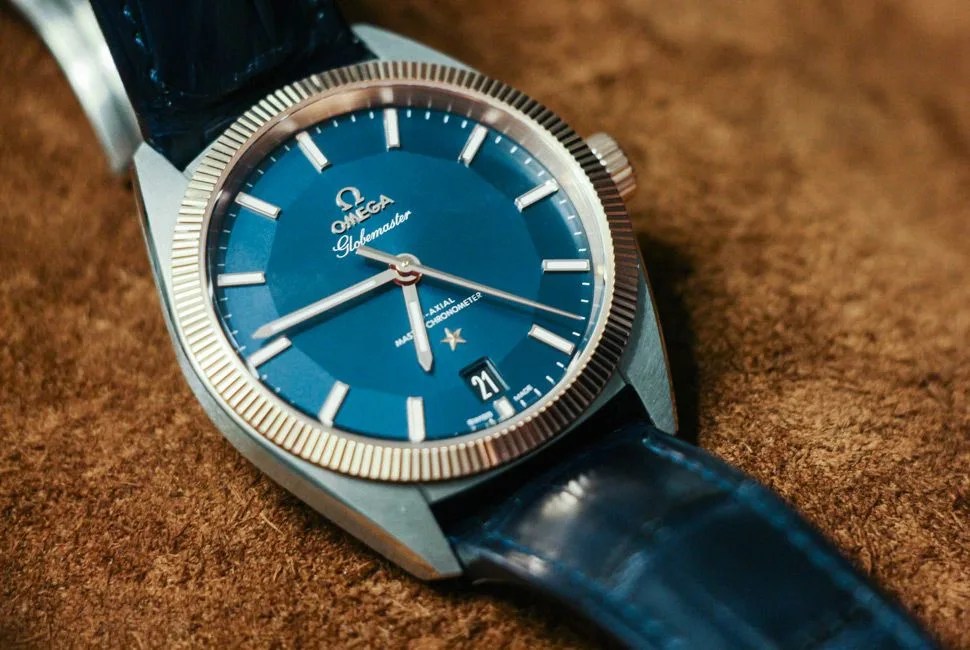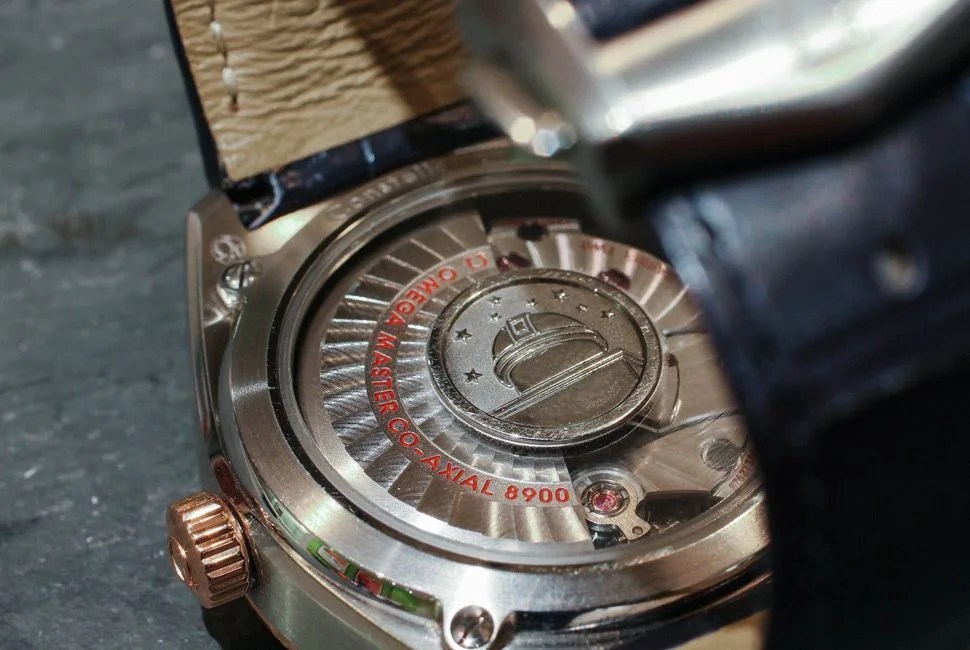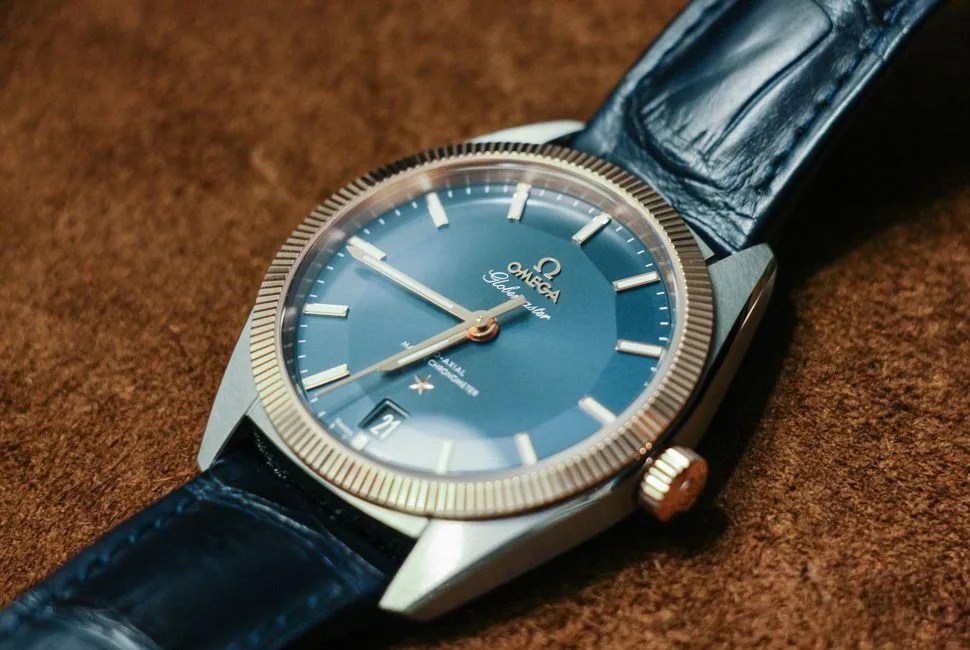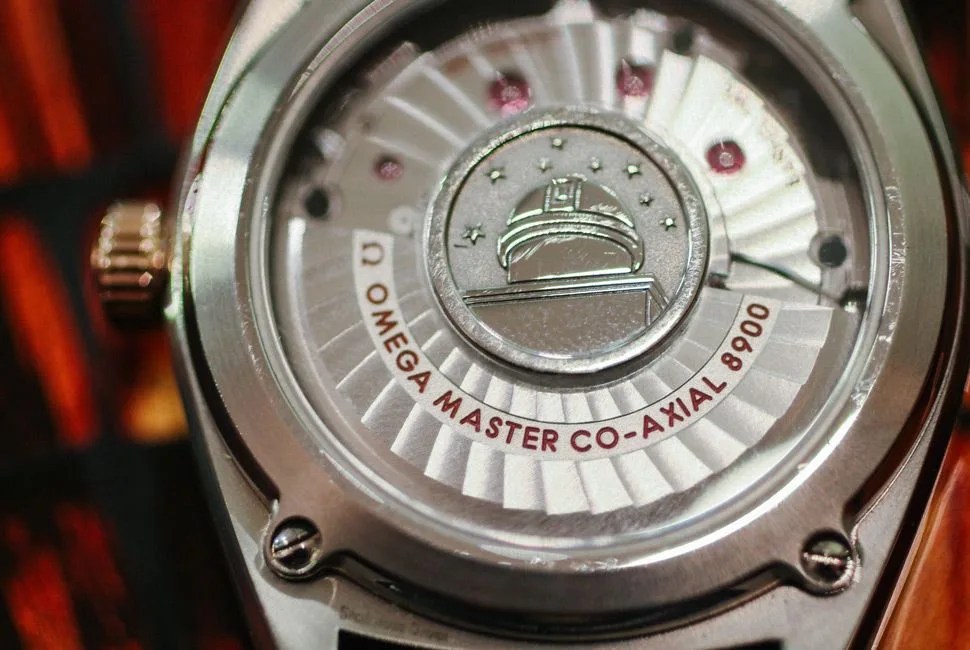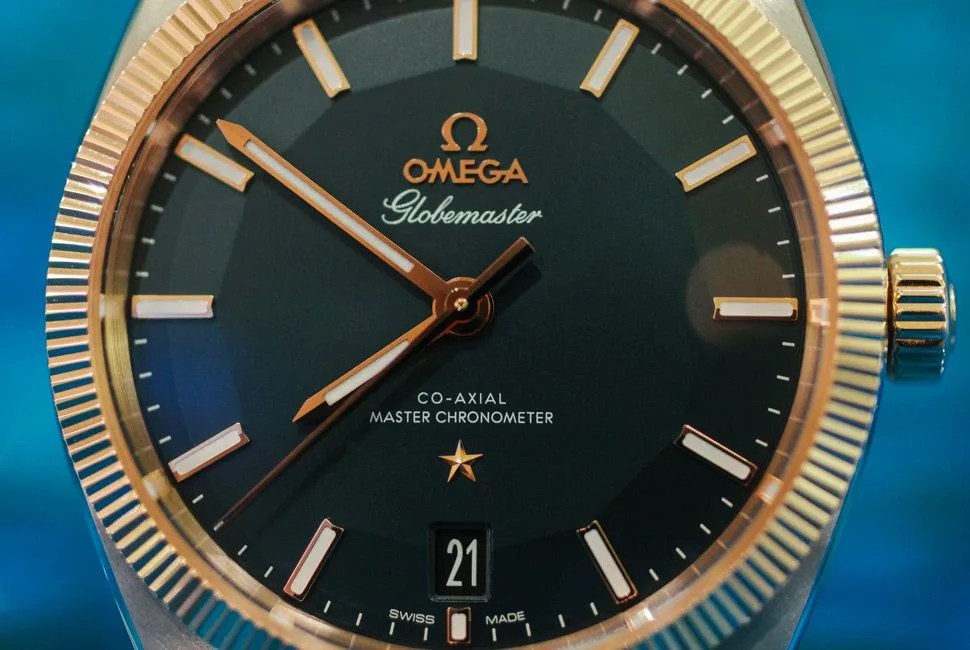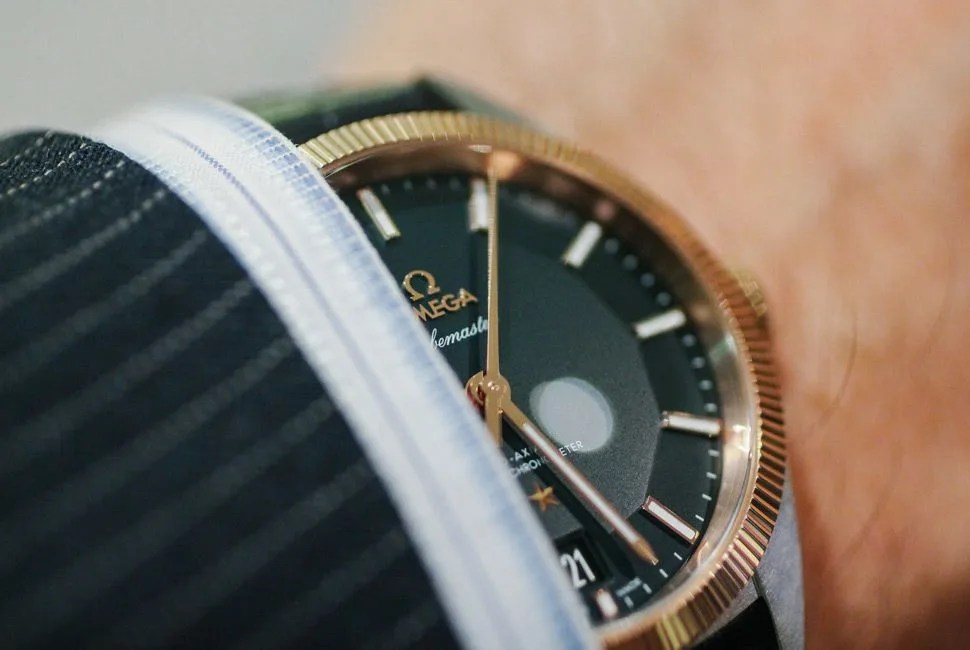6 photos
My 1964 reference ST 168.004 Constellation wasn’t exactly minty fresh. The DeLuxe dial had been refinished and the original hesalite crystal replaced, but the guts were pure, serviced and clean. I wasn’t dismayed, because I knew about the alterations long before pulling the trigger. Anyways, it was the calibre 561 heart beating within its stainless steel case that I cared most about.
The 561 has long been regarded as one of the most accomplished mass-production movements in Omega’s history. It was recognized and certified with chronometer status, meaning the Constellation’s movement was found to be both highly precise and accurate regardless of conditions; it was tested in multiple positions at different temperatures over several days by one of the Bureaux officiels de contrôle de la marche des montres (B.O.s), an official, neutral body.
So, the 561 was built to a standard ensuring 99.9 percent accuracy at any given time, regardless of conditions (provided you wind it, that is). My 561 was also part of a celebrated 100,000-piece production run that was additionally regarded as delivering “especially good results” during testing by the B.O.s’s governing body — a group not known for compliments. It was a remarkable accomplishment by today’s automated standards, let alone Switzerland’s hand-assembled heyday.
Closing the deployment clasp on Omega’s newest flagship, the Globemaster, I’m greeted by a 21st-century update of the original Constellation (nee Globemaster) that pulls design cues from multiple historic models. Its look is clean, fresh and new. It’s larger than both the ‘66 and ‘52 originals from which it draws its inspiration, but the hybridized lineage is direct and clear. At 39mm, the Globemaster occupies a sweet spot — small enough to slide under cuffs and large enough to stand alone. The iconic pie pan dial has always been a thing of beauty, but on this Globemaster, with its steely blue finish encircled by the Sedna Gold fluted bezel, it appears visibly less rounded and much more precise. And precision is clearly Omega’s goal with the Globemaster.
I spent 604,870 seconds with the Globemaster strapped to my wrist — a fact I know not only because of its COSC certification but because of the extra steps Omega took to ensure near-atomic accuracy. Recognized by the Swiss Federal Institute of Metrology (METAS) as the first Master Chronometer, the Globemaster was subjected to, and passed, eight additional, more demanding tests, seven of which apply to the entire watch and one solely to its Co-Axial 8900 movement. What that means outside of bragging circles is that the Globemaster will remain incredibly accurate in conditions most wearers will never expose it to, including a trip through an MRI machine.
The underside of the Globemaster bears the Cupola from the Geneva Observatory, centered on the case back. That symbol, chosen to commemorate Omega’s achievements in precision — prior to B.O.s’s and COSC’s existence — during Geneva’s Observatory trials, is an early marker of timekeeping excellence related strictly to celestial navigation. In 1931 the brand took first place over Patek Philippe in all six categories of testing and in 1936 set a benchmark that would take almost three decades to best — a score of 97.8 out of 100.

